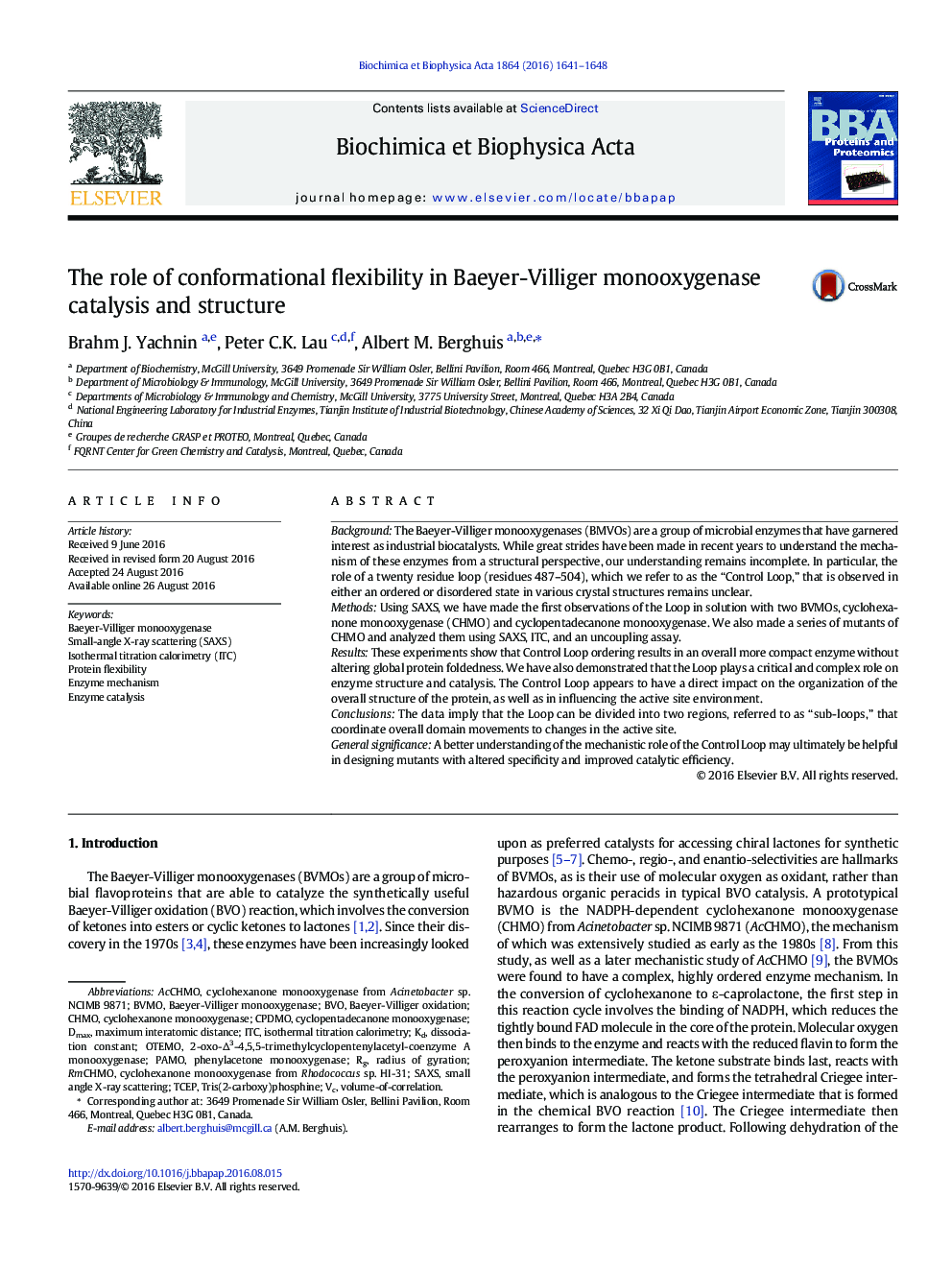| کد مقاله | کد نشریه | سال انتشار | مقاله انگلیسی | نسخه تمام متن |
|---|---|---|---|---|
| 5131960 | 1378784 | 2016 | 8 صفحه PDF | دانلود رایگان |

• Baeyer-Villiger monooxygenase behavior in solution is examined.
• SAXS shows that NADP+ causes the enzymes to become more compact.
• Mutant studies suggest that a 20-residue loop may be divided into two “sub-loops.”
• Each sub-loop principally impacts either global structure or active site.
• Loop may be the link between the active site and domain rotations.
BackgroundThe Baeyer-Villiger monooxygenases (BMVOs) are a group of microbial enzymes that have garnered interest as industrial biocatalysts. While great strides have been made in recent years to understand the mechanism of these enzymes from a structural perspective, our understanding remains incomplete. In particular, the role of a twenty residue loop (residues 487–504), which we refer to as the “Control Loop,” that is observed in either an ordered or disordered state in various crystal structures remains unclear.MethodsUsing SAXS, we have made the first observations of the Loop in solution with two BVMOs, cyclohexanone monooxygenase (CHMO) and cyclopentadecanone monooxygenase. We also made a series of mutants of CHMO and analyzed them using SAXS, ITC, and an uncoupling assay.ResultsThese experiments show that Control Loop ordering results in an overall more compact enzyme without altering global protein foldedness. We have also demonstrated that the Loop plays a critical and complex role on enzyme structure and catalysis. The Control Loop appears to have a direct impact on the organization of the overall structure of the protein, as well as in influencing the active site environment.ConclusionsThe data imply that the Loop can be divided into two regions, referred to as “sub-loops,” that coordinate overall domain movements to changes in the active site.General significanceA better understanding of the mechanistic role of the Control Loop may ultimately be helpful in designing mutants with altered specificity and improved catalytic efficiency.
Figure optionsDownload high-quality image (310 K)Download as PowerPoint slide
Journal: Biochimica et Biophysica Acta (BBA) - Proteins and Proteomics - Volume 1864, Issue 12, December 2016, Pages 1641–1648